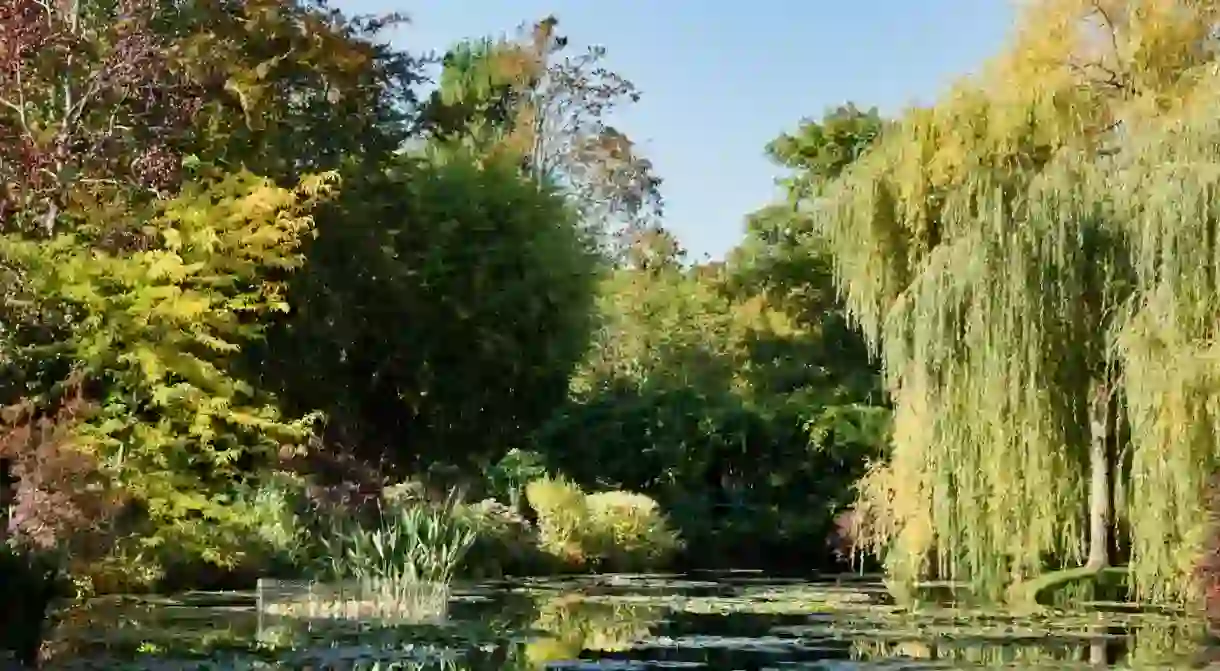The 5 Best Places to See Monet's Art in and Near Paris

Claude Monet is one of the most famous artists ever to have lived and is known as the creator of the Impressionist movement, which recreated the world through light and colour. Monet’s attempts to capture the essence of a scene, whether it’s the light reflected on the water or a majestic piece of architecture, have resulted in some of the most significant works of art in history. From the grand Musée d’Orsay to the artist’s old home at Giverny, here are the best places in and around Paris to see his work.
Musée d’Orsay
Museum, Train Station

The Musée d’Orsay opened its doors in 1986 and offers six different art collections. The impressive architectural structure, formerly a railway station, is home to the most extensive range of Impressionist painters in the world. The collections encompass artists from Manet, Degas and Renoir to Van Gogh and Gauguin, and is also a great Monet museum. It is home to some of Monet’s most famous paintings, such as Women in the Garden (1866) and The Water Lily Pond (1899). The museum is one of the best places to experience Monet up close, while also offering further contributions to the Impressionist theme.
The Orangerie Museum
Art Gallery, Building, Museum

The Musée de l’Orangerie can be found in the centre of Paris, in the Jardin des Tuileries and has gained a worldwide reputation for the impressive water lilies Monet that painted of his garden in Giverny. Les Nymphéas, eight of a series of 250, can be found in two oval rooms, creating a sense of infinite reflection of Monet’s light effects in a 360-degree, naturally lit serene setting. The museum is also home to the Walter-Guillaume collection of Post-Impressionism. The scenic realisation of the water lilies represents one of the most skilful exhibitions of Monet’s masterpieces, and a walk through the Tuileries Garden offer the ideal ending to a day at the Musée de l’Orangerie.
Musée Marmottan Monet
Museum
The Musée Marmottan Monet, unofficially the Monet Museum Paris, offers the greatest collection of Claude Monet paintings worldwide and is home to around 100 of his works. The 19th-century mansion is located in the wealthy 16th arrondissement of Paris and features works such as the Cathédrale de Rouen series (1892-94) and Impression, Soleil Levant (1872). The exhibition of Monet’s artistic work ranges from his early, experimental years to his signature style and allows you to follow his artistic development, as well as to understand the true depth of his talent. The museum also houses a selection of lesser-known Impressionists and temporary exhibitions and is another must-see for Claude Monet enthusiasts.
Le Petit Palais
Art Gallery, Building, Museum

An often overlooked little corner of Monet Paris, Le Petit Palais houses the Musée des Beaux-Arts of the City of Paris and features a section of Impressionist art, including a range of Monet’s works. A trip to the Petit Palais is worth the journey – it’s near Champs-Elysées Clemenceau and Franklin-Roosevelt metro stations – and offers an enchanting atmosphere. The impressive Belle Époque-style building features 1,300 different works, and ranges from medieval collections to French and Italian Renaissance painters. Its Impressionist collection features landscape paintings by Monet as well masterpieces by Bonnard, Pissarro, Cézanne and Renoir. The small indoor garden is particularly enchanting and a further example of Le Petit Palais’s architectural beauty.
Fondation Monet in Giverny, Giverny
Bridge, Museum, Park

The Fondation Claude Monet instantly immerses you in Monet’s most famous works. The house and gardens have been extensively preserved to ensure unique insight into the painter’s world – a world of color, stillness and exquisite national beauty. What is most exciting, however, is being able to cross the actual bridge that features in so many of his works, a feeling that cannot be replicated in even the most architecturally advanced museum. Giverny is also home to the Museum of Impressionists, which exhibits the works of artists who were part of this movement.













